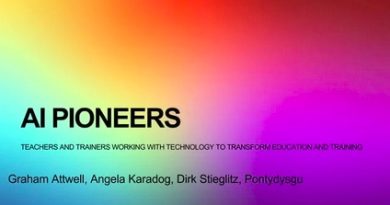Considerations for Curriculum and Assessment design

Drawing on the findings of the GENIAL project, which focused on how generative AI tools are used in practice by students in real time, Dorottya Sallai, Jon Cardoso-Silva and Marcos Barreto analyse how students use these tools differently across qualitative and quantitative subjects and offer recommendations for how educators can integrate these findings into their teaching and assessment plans in a blog article, To improve their courses, Educators should respond to how students actually use AI, on the London School of Economics website.
They say their study suggests that students rely more on AI tools when they are struggling with the quantity of the reading materials or the complexity of the course content and tend to lean less on it when the pace of delivery and the content is more accessible to them. As one of the management students expressed it: “This week’s content was pretty straightforward, and I haven’t found myself using AI”
Based on these preliminary findings, they set out some practical policy recommendations for university educators in relation to course and assessment design. Given the high likelihood that students may use AI as shortcuts, they say educators must find strategies to ensure that students use these tools to enhance their learning rather than bypassing it.
They go on to propose practical Curriculum Design considerations and considerations for Assessment Design.
Curriculum Design Considerations
- Assume Student Use of GenAI: Plan with the expectation that students will use GenAI tools.
- Integrate Non-Marked Activities: Include activities that are not graded but provide feedback on AI use.
- Ensure Full Engagement: Prevent GenAI from diminishing students' engagement with the curriculum. Prepare students to progress beyond AI-generated solutions.
- Teach Critical Analysis: Emphasize the importance of finding primary sources and critically evaluating AI outputs.
- Avoid Underspecified Assignments: Do not attempt to outsmart AI by underspecifying tasks, as future models may overcome these tactics.
- Coding Course Guidance: Instruct students on problem identification and correction in coding. Highlight alternative solutions and teach high-level engineering concepts by analyzing and improving AI outputs.Assessment Design Considerations
- Process Mapping: Visualize the learning journey with milestones and check-in points to evaluate students’ progress.
- Separate Learning from Final Product: Design continuous assessments throughout the term or incorporate documentation of the development process in end-of-course evaluations.
- Measure Individual Learning: Use in-class quizzes at various stages of the term to gauge and support individual student progress. Use these assessments to benchmark final grades against the students' learning journeys

